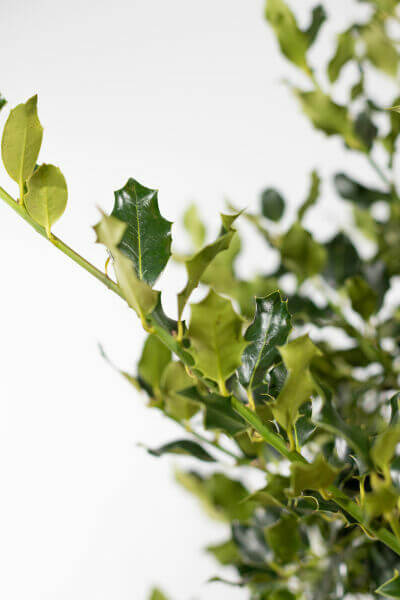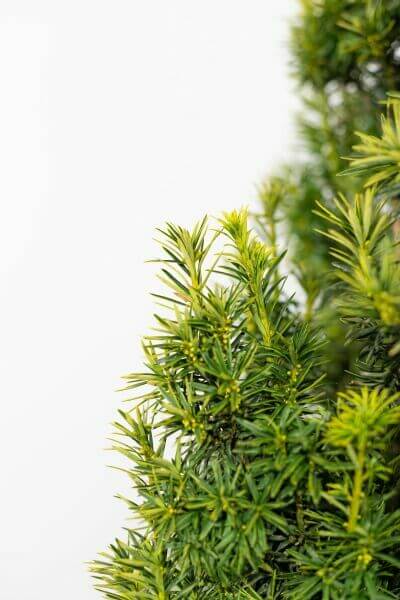Hedge Plants For Quick Privacy
Hedge Plants For Quick Privacy
Blog Article
Best Hedging Plants For Public Spaces
Improve your garden's appeal with rich hedge ranges such as Yew (Taxus), Thuja, Laurel, Photinia, and Bamboo, celebrated for their structural integrity and ecological benefits.
Yew and Thuja provide evergreen coverage and winter season durability, while Laurel uses rapid growth and broad, aromatic leaves.
Photinia adds seasonal appeal with its lively red foliage, and Bamboo lends a low-maintenance, peaceful atmosphere.
These hedges enhance air quality, decrease sound, and develop tranquil, private spaces.
Appropriate planting, spacing, and maintenance guarantee energetic growth and environmental consistency.
Check out how these lush varieties can raise your garden's appeal and wellness.
Key Takeaways
Transform Your Garden With Lush Hedge Ranges
- Select Yew for its thick, evergreen growth and unequaled durability.
- Choose Laurel for its fast development and broad leaves, making sure fast privacy.
- Choose Photinia for its dynamic seasonal foliage, which turns a striking dark red.
- Use Bamboo for a low-maintenance, winter-hardy hedge with visual appeal.
- Area plants 2-3 per meter and prune frequently for optimum development and health.
Popular Hedge Plants
When changing a garden with lavish hedge ranges, it's important to consider popular hedge plants such as Yew, Thuja, Laurel, and Photinia due to their unique characteristics and benefits.
Yew (Taxus) is highly esteemed for its durability and thick, green development, making it a prime option for sustaining landscapes.
Thuja is kept in mind for its evergreen foliage and robust winter season durability.
Photinia includes seasonal vibrancy with red leaves that darken gradually, creating dynamic visual appeal.
Laurel offers rapid growth and fragrant, broad leaves, perfect for fast personal privacy.
Furthermore, Bamboo is an outstanding choice for ambiance, offering a low-maintenance, winter-hardy alternative that boosts the garden's visual with its stylish, swaying canes.
These selections deal with a range of horticultural needs and choices.
Advantages of Garden Hedges
Garden hedges provide a wide range of benefits, making them an important addition to any landscape. These natural barriers are economical to execute and provide substantial wind security, enhancing air blood circulation and contributing to noise decrease. The dense foliage of hedges like Thuja and Beech makes sure personal privacy by obstructing presence, creating a secluded and peaceful environment.
Hedges also play a vital role in microclimate guideline, offering a steady environment that promotes plant growth and lessens temperature changes. Their intricate leaf structures filter toxins, improving air quality and adding to a healthier garden community.
Additionally, hedges excel in sound reduction, taking in and deflecting sound waves to lower ambient noise levels. This double functionality of offering both visual and acoustic privacy boosts the overall serenity and visual appeal of any garden.
Planting and Maintenance Tips
For an effective hedge, careful preparation of the planting area is important. Make sure the soil has proper pH and drainage to support strong root advancement.
Area the plants appropriately for the chosen species. Water the hedge regularly throughout its preliminary growth phase, changing as required with seasonal modifications.
Carry out a systematic pest control and illness prevention technique, utilizing chemical or natural treatments when essential. Routinely check for aphids, mites, and fungal infections.
Apply mulch to maintain moisture and reduce weeds. Seasonal pruning promotes dense growth and air flow, vital for plant health.
Following these standards will assist you cultivate a vibrant, well-kept hedge that boosts the beauty of your garden.
Spacing and Trimming Guidelines
Spacing and Trimming Guidelines
Appropriate spacing and trimming are important for cultivating healthy, aesthetically appealing hedges. Sufficient spacing makes sure each plant gets adequate nutrients, light, and air flow.
Follow these standards for ideal hedge maintenance:
- Spacing: Position hedge plants 2-3 plants per meter to encourage robust development.
- Pruning Techniques: Regular pruning is important for maintaining desired hedge height and shape. Trim new development in summer season and cut down older wood during winter.
- Seasonal Care: Adjust cutting schedules and approaches according to seasonal requirements to guarantee plant health.
- Hedge Height: Routinely monitor and trim to keep the wanted hedge height and accomplish consistent looks.
Adhering to these actions will guarantee your hedge flourishes, enhancing both the appeal and performance of your garden.
Selecting the Right Hedge
Choosing the Right Hedge
Picking the suitable hedge involves examining elements such as mature height, foliage density, and environmental strength. Successful hedge plant choice needs comprehending each species' growth characteristics and site-specific adaptability.
For example, Yew (Taxus) uses exceptional durability and dense growth, while Thuja is notable for its winter season strength. Furthermore, considering upkeep requirements is essential; fast-growing types like Laurel or Privet demand routine trimming, whereas low-maintenance alternatives like Bamboo or Ivy might be more effective for those seeking very little upkeep.
Ecological factors such as soil type, light schedule, and moisture conditions must also direct the choice process. This cautious technique ensures the picked hedges will thrive, offering both practical and visual benefits to the garden landscape.
Delivery and Planting Suggestions
To ensure your hedge plants flourish, they must be delivered by specialized couriers and planted immediately upon arrival.
Follow these necessary steps for successful planting:
- Soil Preparation: Enhance the soil with raw material to improve drainage and nutrient content.
- Planting Depth: Produce a trench two times the width and equivalent to the depth of the root ball.
- Watering Techniques: Water thoroughly after planting, keeping the soil consistently damp however not filled.
- Mulching: Use a layer of mulch to retain moisture and suppress weeds.
Client Support and Service
Provided the important function of prompt help in horticultural pursuits, our customer support team is available six days a week through telephone, email, and social media to use expert guidance and quickly deal with any concerns. Their commitment to quick action times ensures client fulfillment by dealing with inquiries associated with plant health, optimum planting methods, and maintenance schedules.

-------------------
Within 48 hours
This extensive support group, enhanced by an excellent 9.3/ 10 consumer ranking, highlights our dedication to enhancing the gardening experience for every client.
Often Asked Questions
The Length Of Time Does It Consider Hedge Plants to Establish?
Hedge plants generally need one to 3 years to end up being totally developed, with the precise duration varying by species and growing conditions.
Efficient care during this crucial period is essential for robust growth. Constant watering, alert weed control, and proper fertilizer application are critical in promoting strong root advancement.
For example, fast-growing species like Laurel may develop faster, while slower-growing ranges such as Yew might take longer. Diligent maintenance speeds up the facility procedure, leading to dense and healthy hedges.
What Are the Finest Hedge Plants for Personal Privacy?
The question of the very best hedge plants for personal privacy includes assessing evergreen and deciduous options.
Evergreen hedges like Thuja, Laurel, and Cypress provide year-round protection, guaranteeing continuous personal privacy.
On the other hand, deciduous hedges such as Beech use seasonal personal privacy, shedding leaves in colder months.
Key upkeep ideas for privacy hedges include routine trimming, fertilizing in spring, and proper spacing-- normally 2 to 3 plants per meter.
Furthermore, consistent watering and diligent weed elimination are important for promoting healthy, dense development.
Can Hedge Plants Attract Wildlife to My Garden?
Yes, hedge plants can bring in wildlife website to your garden by offering essential advantages like shelter, food, and nesting sites, therefore improving regional biodiversity. For example, yew, holly, and laurel are excellent for bring in birds, while ivy supports a variety of pests.
Nevertheless, it is necessary to keep in mind that there are some disadvantages, such as increased upkeep to manage insects and routine upkeep. Thoroughly picking and maintaining hedge ranges can assist stabilize these drawbacks and benefits, eventually cultivating a vibrant and sustainable environment in your garden.
Are There Any Flowering Hedge Plants Available?
Yes, there are flowering hedge plants readily available that can enhance the charm of your garden.
For instance, Elaeagnus, likewise called Olive Willow, produces fragrant white flowers in the fall, adding a touch of beauty.
Photinia, another popular option, showcases vibrant red leaves that mature into a rich green, developing a vibrant visual effect throughout the seasons.
To ensure these plants flourish, it's important to practice correct pruning techniques and seasonal maintenance, such as trimming new growth in the summertime and cutting down in the winter season.
These procedures will assist maintain the health and aesthetic appeal of your flowering hedges.
How Do I Prevent Pests in My Hedge Plants?
To prevent insects in hedge plants, utilize natural insect control techniques and keep correct hedge care. Present helpful pests like ladybugs, which victimize damaging bugs, to develop a well balanced environment.
Frequently check your hedges for indications of problem and quickly eliminate any affected parts to prevent the spread. Guarantee the health of your hedges by applying balanced fertilizers and providing adequate water.
Utilize mulching to maintain soil wetness and appropriate spacing to decrease plant stress and promote robust growth. These practices collectively help in reducing pest concerns and keeping a healthy hedge.
Conclusion
In essence, selecting the right hedge ranges such as Yew, Thuja, and Laurel can transform any garden into a peaceful haven. These plants provide year-round greenery, enhance aesthetic appeal, and deal practical benefits like sound decrease and wind protection.
Correct planting methods, accurate spacing, constant watering, and seasonal cutting are important for optimal development.
Reputable delivery services and skilled client assistance guarantee a seamless experience from purchase to planting, making it easier than ever to raise your outdoor area.
Garden hedges use a wide range of advantages, making them an important addition to any landscape. These natural barriers are cost-effective to carry out and provide substantial wind security, boosting air flow and contributing to sound reduction. The thick foliage of hedges like Thuja and Beech ensures personal privacy by blocking exposure, developing a secluded and peaceful environment.

Pruning Strategies: Routine pruning is vital for maintaining desired hedge height and shape. Cut new growth in summer season and cut back older wood during winter season.
Report this page